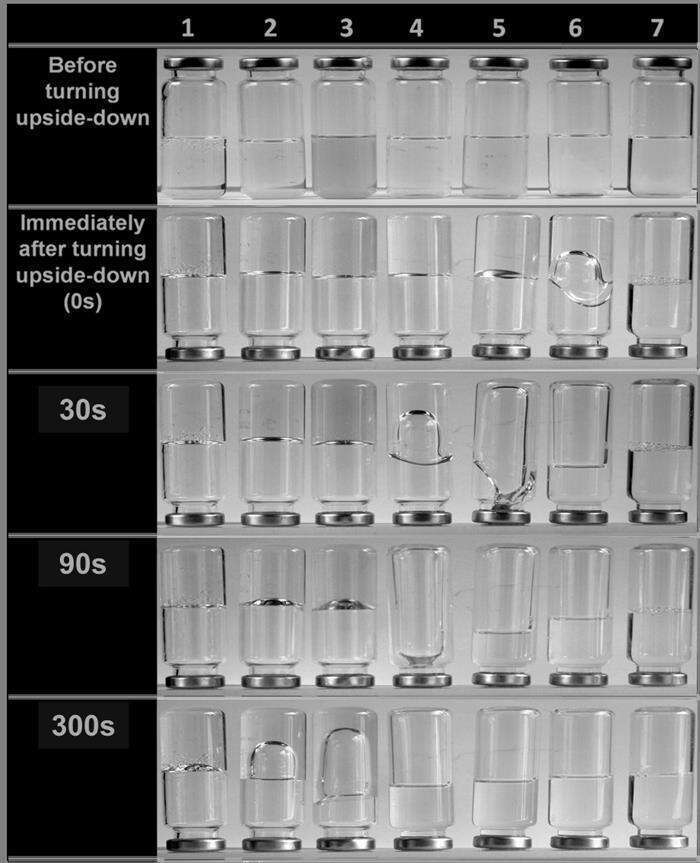Wormlike micelles (WLM) formed by the threading of different aromatic co-solutes at the micelle palisade of CTAB were systematically studied. For this purpose the aromatics: phenol and derivatives of benzoate and cinnamate were used. Depending on the concentration of the components, the chains of the WLM entangle, forming gel-like systems (see Figure 1). Based on this aspect, some structural characteristics of the aromatic molecules were investigated to correlate with the linear rheology of the WLM formed. The rheological results are explained by considering the relative importance of the electric charge, hydrophobicity and steric hindrance of groups of the aromatic co-solutes. Experiments of SANS produced a complementary panel to understanding the structure of the gels of CTAB containing the aromatics.

Figure 1. The gravitational effect on gels containing 200 mmol L-1 of CTAB and 200 mmol·L-1 of: 1 – phenol; 2 – cinnamate; 3 – OHCA; 4 – salicylate; 5 – OMCA; 6 – benzoate; and 7 –ortho-methoxybenzoate . The values (on the left) correspond to the times after the inversion of the vials.